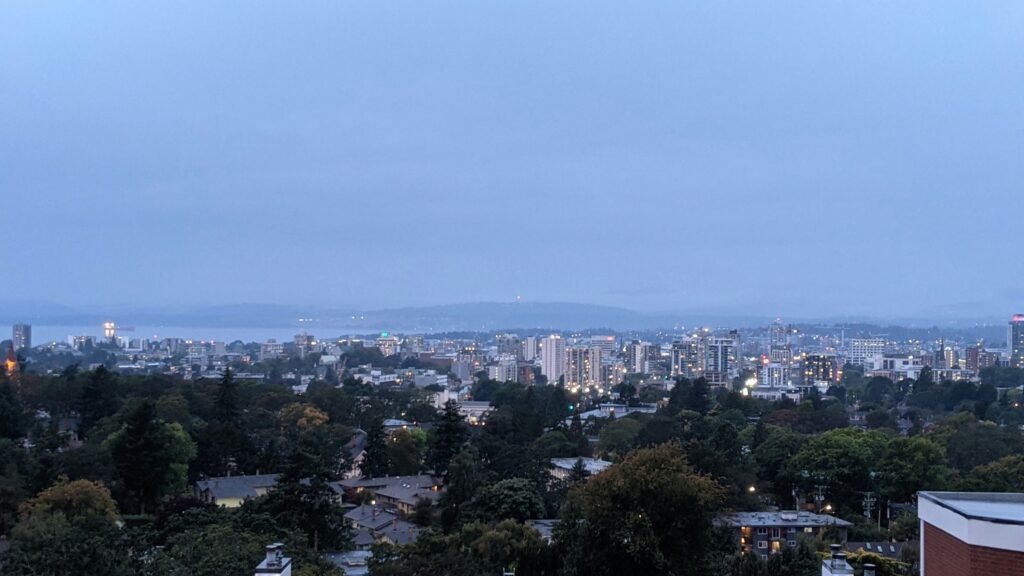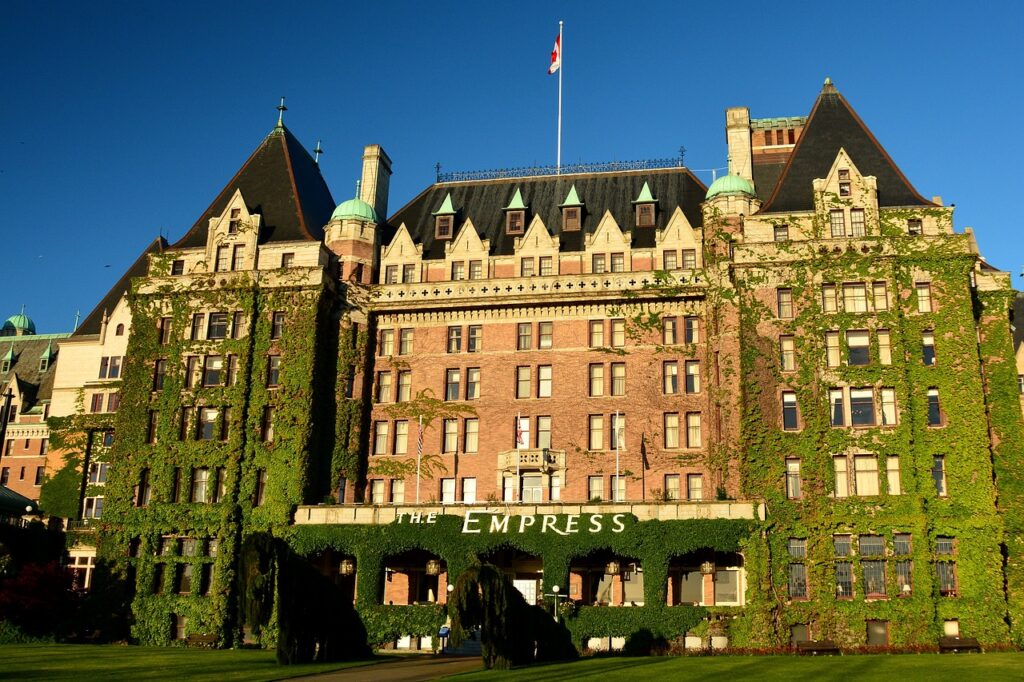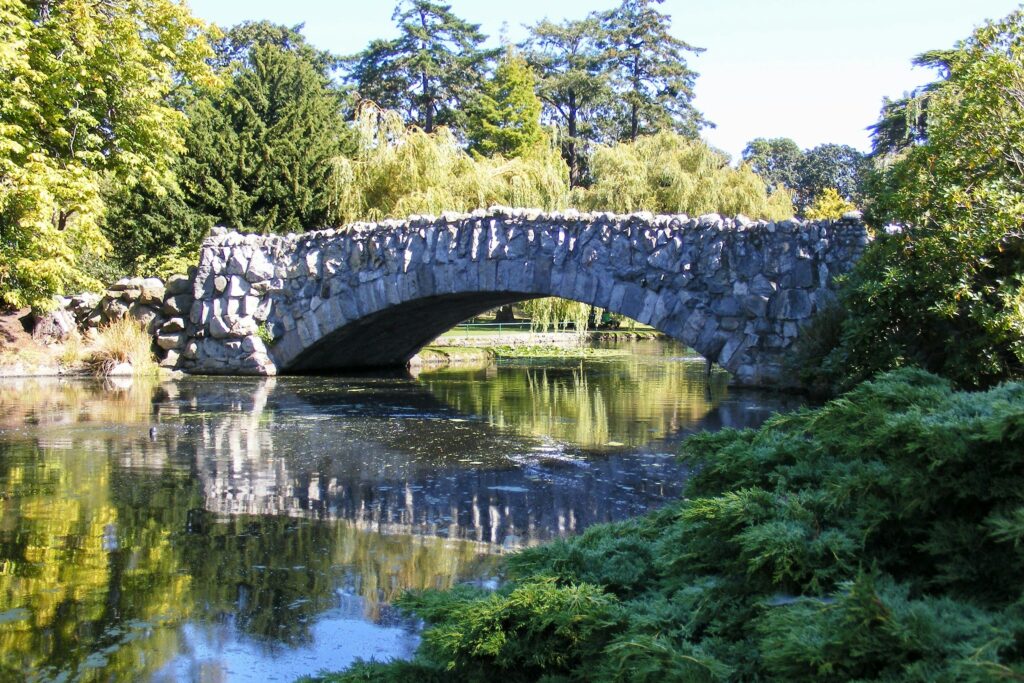Located at the very southern tip of Vancouver Island, British Columbia and surrounded by the ocean, the capital city of Victoria BC is one of the most popular tourist destinations in Canada with beautiful heritage buildings, distinctly British charm, and stunning natural beauty! Every year, people from around the globe come to Victoria to enjoy heritage downtown, the great dining scene, incredible outdoor activities, the mildest climate in Canada and bask in the tranquillity of the West Coast. Having a holiday here is one thing, but what is it actually like to live in Victoria? There are pros and cons of living in Victoria so if you’re considering a move here, this is a great place to start!
Information About Victoria
Located at the very southern tip of Vancouver Island, Victoria is a vibrant city known for its rich history, stunning architecture, and abundant natural beauty. While many people refer to the entire region as “Victoria,” there’s a distinction between the City of Victoria and the Greater Victoria area.
Victoria vs. Greater Victoria
City of Victoria
This is the urban core, home to the downtown area, heritage buildings, government offices, and many of the city’s main attractions such as the Inner Harbour, Parliament Buildings, and Beacon Hill Park.
Greater Victoria
This encompasses not only the City of Victoria but also a collection of municipalities and neighbourhoods each with its own unique charm and amenities. Greater Victoria spans from the far west coast of Southern Vancouver Island, across the southernmost tip and up the Saanich Peninsula to include the towns of Sooke, Sidney and Westshore
Here are the main areas and neighbourhoods within Greater Victoria:
Saanich Peninsula
North Saanich: Rural and residential, this area is home to the seaside town of Sidney and the location of the Swartz Bay ferry terminal where you can find passage to Gulf Islands and Tsawassen on BC’s mainland.
Central Saanich: Victoria’s agricultural hub where you can find working farms, the famous Butchart Gardens, and numerous wineries and farms.
Saanich East: Located on the south east section of Saanich, this area features the University of Victoria, numerous parks, and family-friendly neighbourhoods like Gordon Head and Cadboro Bay.
Saanich West: Includes rural areas, lakes, and the suburban community of Royal Oak.
West Shore
Langford: One of the fastest-growing neighbourhoods with shopping centres, recreational facilities, and new housing developments.
Millstream & Bear Mountain: Millstream is a popular commercial area with many new condo buildings and townhouses in the area and just up the mountain, you’ll find the beautiful neighbourhood of Bear Mountain – a community centred around the resort of Bear Mountain.
Colwood: A diverse community with a beautiful waterfront known for Royal Roads University, Fort Rodd Hill, and Hatley Castle.
Highlands: Characterized by its rugged, forested landscape, large rural properties, and commitment to environmental preservation, providing a peaceful, nature-centric lifestyle.
Metchosin
A luxurious, rural community on the edge of the ocean with large lots, farms, and extensive outdoor recreation opportunities.
Sooke
A gateway to the rugged west coast known for the beautiful beaches, the stunning East Sooke Regional Park and a strong sense of community.
Esquimalt
A community with a naval base, waterfront parks, and historic sites.
Oak Bay
Known for its affluent neighbourhoods, charming village-like shopping area, and scenic coastline.
View Royal
A residential community that acts as a bridge between Victoria and the West Shore municipalities.
Each of these areas contributes to the diverse and dynamic character of Greater Victoria, making it a wonderful place to live, work, and explore. Whether you’re looking for urban amenities or rural tranquillity, you’ll find it in Greater Victoria.
The Pros of Living in Victoria
The Natural Beauty
Living in the city of Victoria means that no matter where in the city you live, you’ll only be a short walk away from incredible public parks, gardens and of course, beaches! Downtown dwellers can enjoy the Dallas Road seaside path that runs 7 kilometres along the oceanfront and offers sparkling ocean views and glimpses of the distant Olympic Mountains. Just a short drive from downtown, you’ll be able to access stunning beaches, gorgeous hiking trails, extensive dedicated biking paths and surrounded by wildlife! Plus, because the city is on the edge of the temperate rainforest zone, it has an incredibly mild climate with warm summers and mild winters so you can enjoy the natural beauty year-round. If you’re itching to get out of the concrete jungle or away from plummeting temperatures and snow for the majority of the year, Victoria is a dream come true!
The Heritage Architecture
Victoria is a charming city filled with heritage buildings instead of towering skyscrapers and you’ll find that most heritage sites are a walk away! Beacon Hill Park, Fisherman’s Wharf, the Inner Harbour, the Parliament Buildings and more are all located just a short walk from one another allowing days of exploration on foot! Plus, most neighbourhoods in Greater Victoria have heritage sites and cultural centres close by incredible public parks, gardens and of course, beaches!
Wildlife
When it comes to wildlife, Victoria has an abundance of animals that call the parks, gardens and waters around the city home. You can say “Hi” to the friendly harbour seals in Fisherman’s Wharf, bald eagles and hawks are common sights in the skies, see enormous herons that fish in the shallows and if you look carefully and often, you’re sure to spot a pod of orcas off the coast. Songbirds, hummingbirds, rabbits, and deer love to frequent the gardens and parks in Victoria and you can often find peacocks, who live in Beacon Hill just roaming around southern Victoria and along Dallas Road leaving their jewelled feathers on the pavement.
The Restaurants
While there are more restaurants in Victoria per capita than any other city, if you’re used to the dining scene in Toronto or Vancouver, Victoria can seem a little low-key. However, what Victoria lacks in quantity of restaurants, it more than makes up for in quality! The philosophy for Victoria restaurants is that the best food is made with local, seasonal ingredients – a philosophy shared with top chefs all over the world. But Victoria takes this even further – from fine dining to casual food trucks, the ingredients used by Victoria restaurants is often of the highest quality which means it’s more likely to be healthier and tastier! Not only is the quality top-notch but Victoria has a wide range of restaurants to suit whatever you’re craving. Here, you can find some of the best sushi outside of Japan, amazing seafood, juicy burgers, avante-garde fine dining, elevated and hearty Italian food and so, so much more.
Victoria is also a hub for craft breweries, cideries and distilleries that produce award-winning libations that you can enjoy at home or on site and there are few places other than the UK where you can find such traditional English and Irish pubs!
The Weather
This might be one of the best things about living in this beautiful city – get all the benefits of living in Canada without having to battle bitter winters and scorching summers! Victoria has a temperate climate with the temperatures reaching a peak of around 25ºC (77ºF) in the summer months and lows of -2ºC (28ºF) in the winter. Typically though, summer temperatures hover in the low-mid twenties and winter temperatures in the high single digits (8º-10º) – a far cry from the -30ºC and lower in many parts of Canada! Plus, unlike other parts of Canada who deal with snow and plummeting temperatures for 6 months or more in Victoria, spring usually begins in February with buds beginning to form on trees, summer starts in mid-June, fall arrives mid-late October and winter in late November – February. Winters rarely have much snow, there are usually a few days where the city will be blanketed but with the rains and shifting weather from the ocean, snow rarely stays very long. If you want a real snowy experience, you’ll have to head up to Mount Washington.
The Ferries
Living on an Island and relying on ferries can have its challenges but the ferries have a certain charm to them – so long as you’re not in a rush!
BC Ferries
BC Ferries offers services to the Lower Mainland and Gulf Islands that allow you to explore the waters and areas around Vancouver Island with ease. Many of the ferries are drive-on so you can take your car to explore and get home easily. All ferries on the Southern Island leave from Swartz Bay at the top of the Saanich Peninsula and if you’re going to the Lower Mainland, the ferry arrives in Tsawwassen meaning that if you’re going from downtown Victoria to downtown Vancouver, you will spend a fair amount of time driving or on public transport. Despite this, the ferry ride itself is a beautiful trip as you weave around the Gulf Islands. If you’re going to a Gulf Island, the trip is often far more straightforward as the Gulf Islands are much smaller and require less driving time. In both cases, it’s important to check the schedules and book your travel ahead of time because BC Ferries is the primary mode of transportation for Islanders and popular routes get busy quickly which can mean long waits or having to reschedule for another sailing.
Clipper
The Victoria Clipper which leaves from downtown Victoria and arrives downtown Seattle through the Strait of Juan de Fuca is a scenic way to travel to the US! This 2 hour and 45 minute journey is a comfortable one with plush seats and an on-board cafe where you can purchase snacks and beverages. This ferry is walk-on only though so if you’re hoping to spend some time exploring Seattle, you’ll have to make rental car arrangements or rely on public transport while you’re there.
The Standard of Living
Living in Victoria offers a high standard of living: it’s a safe place to live with a stable government and economy, employment opportunities, growing industries and incredible publicly funded healthcare and education. While in recent years, Victoria has battled with a rising homelessness spurred by the lack of affordable housing, Victoria offers a high quality of life compared to many major North American cities.
Stability
The government in Victoria is stable with regularly held elections and adherence to Federal and Provincial laws. The politics in Canada is not nearly as entertaining as the politics south of the border and we like it that way. In 2008, when the crash happened and millions of Americans’ lives were turned upside-down, Canadians felt only a few ripple effects of the market downturn. Generally speaking, the Bank of Canada and its financial industries are cautious to a fault and while that can create issues, as we’re seeing now with skyrocketing interest rates, Canada has maintained a relatively stable economy over the years.
Job Opportunities
In Victoria, there are many job opportunities especially if you’re interested in a position in the Provincial Government, tourism, healthcare, construction or retail and the tech sector has been booming in Victoria for the last few years.
Healthcare
Canada has public healthcare so if you need to go to the hospital, you won’t be given a bill at the end of your visit and there are doctors, walk-in clinics and pharmacies all over the city.
Education
If you’re moving with kids, the public and private schools in Victoria are excellent with dedicated teachers and administrators to ensure that every child gets a quality education. For kids graduating out of high school and for adults looking to expand their skill or knowledge base, the University of Victoria is an excellent institution.
The Cons of Living in Victoria
It is Remote
When you look at Victoria on a map, you’ll see that you really are on the farthest west coast in North America. It can be a little strange feeling so cut off from the rest of the world especially because to get off the Island, your only options are ferries, seaplanes and airplanes. While that seems like a lot of options, the ferries are often full and require pre-planning, sometimes weeks ahead for holidays, and they’re slow. Vancouver is only 115 kilometres from Victoria but the journey takes 4 – 5 hours with the ferry system. Seaplanes are an incredible way to get from downtown Victoria to downtown Vancouver quickly but you’ll have to pack light because there is a weight limit on the small pontoon planes and the journey can be very expensive. Plus, if you travel for work or if you want to do more frequent international travel, you’ll find that there are limited direct flights from Victoria International Airport. This can make international flights more expensive and take longer than leaving from a major city on the mainland of Canada.
The Cost of Living
While Victoria is cheaper than living in other Canadian cities like Toronto or Metro Vancouver, it is not a cheap city to live in. While there might be many different types of Victoria homes, real estate prices and rentals have soared in recent years making housing a big issue for anyone living in Victoria. In many cases, you’ll have to make a tough decision and weigh up the costs of buying vs. renting in the city. Food prices are also high in Victoria, as are utilities, car prices, insurance and cell phone services. The cost of attractions and activities are on par with the rest of Canada but it is important to weigh up the benefits of living in Victoria with the actual costs.
It is on the Juan de Fuca Plate
Much of Southern Vancouver Island is on the Cascadia Subduction Zone with Victoria sitting right over the fault line. Victorians all know that if there were a large earthquake, there is a possibility that Victoria could experience significant destruction of the city or worse, be submerged. While this has been talked about for years and casually known, most Victorians do have earthquake bags ready to go to last 72 hours if there was a major earthquake. While this sounds terrifying, small earthquakes have been happening around Vancouver Island for years with no significant events.
Ultimately, Victoria is an incredible place to live where you can easily have a healthy, active lifestyle filled with high quality food, incredible fresh air, and a laid-back lifestyle. If you want to see what it’s like to live in Victoria, have a look at the selection of long term rentals EMR offers in Greater Victoria and immerse yourself in life in Victoria!





